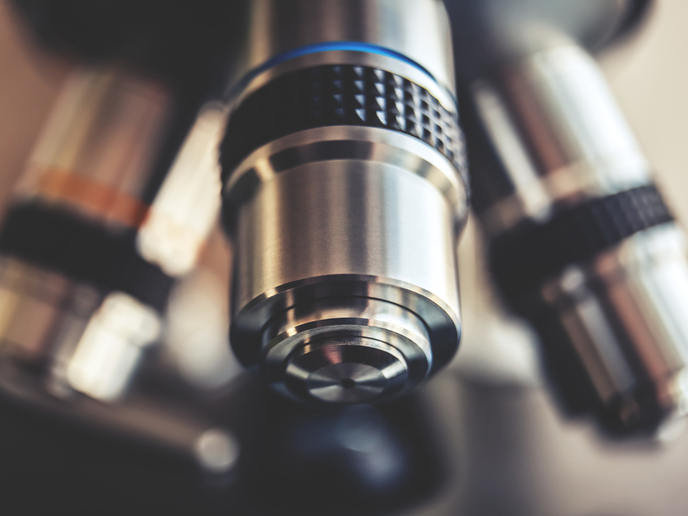Lab on a chip? Developing a tiny, super-resolution optical microscope
Imagine shrinking a microscope, integrating it with a chip and using it to observe inside living cells in real time. Wouldn’t it be great if this tiny microscope could also be incorporated into electronic gadgets, in the same way that smartphone cameras are today? What if doctors manage to use such a tool for diagnosis in remote areas without the need for large, heavy and sensitive analysis devices? The EU-funded ChipScope project has made significant progress towards achieving these objectives. Researchers involved with the EU-funded ChipScope project are now developing a novel strategy to enhance optical microscopy. A news item on the project website states: “In classical optical microscopy, the analysed sample area is illuminated simultaneously, collecting the light which is scattered from each point with an area-selective detector, e.g. the human eye or the sensor of a camera. In the Chipscope idea instead, a structured light source with tiny, individually addressable elements is utilized.” The same news item notes that “the specimen is located on top of this light source, in close vicinity. Whenever single emitters are activated, the light propagation depends on the spatial structure of the sample, very similar to what is known as shadow imaging in the macroscopic world.” An image is created when “the overall amount of light which is transmitted through the sample region is sensed by a detector, activating one light element at a time and thereby scanning across the sample space. If the light elements have sizes in the nanometer regime and the sample is in close contact to them, the optical near field is of relevance and super resolution imaging may become possible with a chip-based setup.”
Innovative technologies
The ChipScope project brings together several areas of expertise to complete its alternative approach to optical super-resolution. “The structured light source is realized by tiny light-emitting diodes (LEDs), which are developed at the University of Technology in Braunschweig, Germany,” the news item adds. It emphasises that currently “no structured LED arrays with individually addressable pixels down to the sub-μm regime are commercially available. This task belongs to the responsibility of TU Braunschweig within the frame of the ChipScope project.” The concept also involves another component: “single-photon avalanche detectors (SPADs), which can detect very low light intensities down to single photons.” The news item states: “First tests with those detectors integrated into a prototype of the ChipScope microscope have already been conducted and have shown promising results.” It adds: “Moreover, a way to bring specimens into close vicinity of the structured light source is vital for proper microscope operation. An established technology to realize this utilizes microfluidic channels, where a fine system of channels is structured into a polymer matrix. Using high-precision pumps, a micro-volume liquid is driven through this system and carries the specimen along to the target position. This part of the microscope assembly is contributed by the Austrian Institute of Technology AIT.” The ChipScope (Overcoming the Limits of Diffraction with Superresolution Lighting on a Chip) project will end in December 2020. Project partners have already developed a prototype of the proposed microscope and hope to present a more powerful version with higher resolution by the end of the project. For more information, please see: ChipScope project website
Countries
Spain



